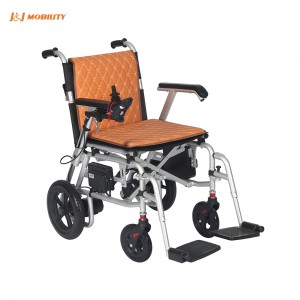7 Common Problems and Solutions for Electric Wheelchairs
Electric wheelchairs are essential for many elderly and disabled individuals, greatly enhancing their daily lives. However, maintenance can be challenging, and even the best power wheelchairs may encounter issues. Here are seven common problems you might face and their solutions, allowing you to troubleshoot effectively without needing to contact the manufacturer every time.
Why Won’t My Electric Wheelchair Start?
Check Battery Installation: Ensure the batteries are installed correctly.
Power Switch: Verify that the power is turned on by checking the joystick light.
Operating Mode: Confirm that the wheelchair is set to “Power” mode, not “Manual.”
Charger Connection: Ensure the charger and power cord are unplugged, as many electric wheelchairs won’t operate while charging.
Circuit Breaker: If the wheelchair moves only a short distance, check if the circuit breaker has tripped and inspect the wires and connectors for damage.
Why Isn’t the Joystick Lighting Up?
Power Status: Check whether the power is turned on.
Connection: Ensure the controller is properly connected to the power supply.
Battery Charge: Confirm that the wheelchair batteries are fully charged.
Why Can’t My Wheelchair Batteries Hold a Charge?
Charger Issues: Make sure the charger is plugged into a working outlet. Test with another device if necessary.
Compatibility: Confirm that you are using the correct charger, as many chargers are incompatible.
Connections: Ensure all components are connected properly.
Battery Condition: Check if the battery is fully charged, noting that some models have overcharge protection. If the charger and battery are both defective, replace them promptly.
Why Do My Wheelchair Batteries Not Perform Like Before?
Battery Deterioration: Batteries naturally degrade over time with use. If the decline in performance seems excessive, consult a professional for maintenance.
Why Is My Electric Wheelchair Slower Than Usual?
Speed Settings: Check if the speed setting has been accidentally adjusted on the controller.
Special Models: If you are using a reclining or standing wheelchair, power output may automatically decrease when the seat isn’t properly positioned.
Terrain Impact: Driving on uneven surfaces, such as grass or cobblestones, can also slow down the wheelchair.
Why Is Driving My Electric Wheelchair Not Smooth?
Tire Condition: Inspect the tires for flats, punctures, or damage, as these can significantly affect performance. Electric wheelchairs may have pneumatic (air-filled) or solid (foam-filled) tires.
Terrain Considerations: Driving on uneven ground can also affect how smoothly the wheelchair operates.
Why Do I Hear Abnormal Sounds When Driving?
Speed Levels: Low speeds can sometimes cause unusual noises; try increasing your speed.
Motor Issues: If the motors are damaged, they may produce strange sounds. In this case, consider replacing the motor or taking the wheelchair to a repair shop.
Assembly Check: Ensure that the wheelchair is properly assembled, especially at joints that aren’t welded.
Conclusion
For your safety, regular maintenance of your electric wheelchair is essential, particularly for critical components like the brakes, tires, controller, and batteries. This routine care can help prevent unforeseen issues and ensure smooth operation.
J&J Mobility is a leading manufacturer that combines research, production, and sales. We continually strive to improve our products and have distributed them worldwide. If you wish to collaborate or have further questions, please contact us!
Post time: Oct-28-2024


